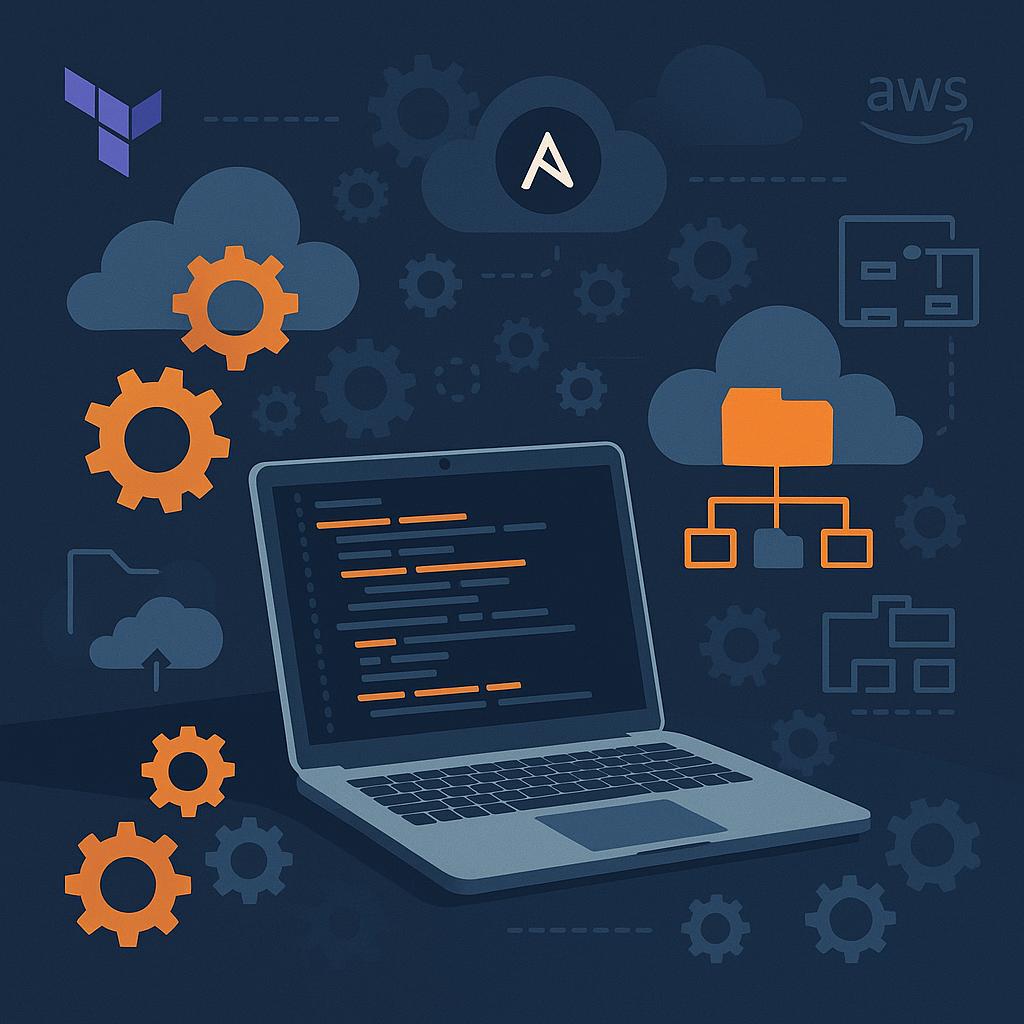Infrastructure as Code (IaC) is transforming how teams manage and provision IT infrastructure by automating processes that were once manual and error-prone.
By capturing infrastructure definitions in version-controlled code, organizations can ensure consistency, reduce deployment times, and scale efficiently.
This article outlines essential concepts, compares leading tools, and shares critical best practices for building reliable, secure, and scalable IaC solutions.
Understanding Infrastructure as Code: Key Concepts and Benefits
Infrastructure as Code enables teams to define and manage infrastructure using code stored in version control systems. This approach moves infrastructure provisioning away from manual processes, reducing the risk of configuration drift and human error.
By treating infrastructure definitions as code, teams gain predictable, repeatable deployments and the ability to recover or reproduce environments quickly. The process of automating deployment and updates accelerates delivery cycles, increases transparency, and ensures operational consistency across environments.
These benefits are critical for organizations adopting DevOps and continuous delivery practices. IaC supports rapid changes and frequent releases while maintaining system reliability.
Declarative vs. Imperative Approaches
Declarative Infrastructure as Code tools focus on specifying the ideal state of the infrastructure. Teams define resources and their desired configuration, and the tool is responsible for making the actual state match what is described.
This method reduces complexity, as the details of how to achieve the target state are handled by the tool. In contrast, imperative approaches require users to specify step-by-step instructions for provisioning and configuring resources.
Key comparison:
| Approach | How it Works | Pros | Cons |
|---|---|---|---|
| Declarative | Define desired state, tool reconciles actual state | Simplifies, reduces errors | Less granular control |
| Imperative | Explicit instructions for each operation | More control | Risk of inconsistency |
The choice often depends on project requirements and the level of control needed.
Idempotency and Version Control
Idempotency ensures that code deployments produce identical results regardless of how many times they are executed. This eliminates side effects, helping teams avoid inconsistencies between environments or after repeated runs.
Using version control systems for IaC enables rigorous change tracking, collaboration, and rollback capabilities. Teams can audit changes, perform reviews, and quickly revert to previous configurations if issues arise.
Combined, these practices give organizations confidence that infrastructure is reliable, recoverable, and secure throughout the software lifecycle.
Top Tools for IaC Implementation
Selecting the right Infrastructure as Code (IaC) tool is crucial for achieving reliable, automated infrastructure management. Most teams rely on mature platforms that support integration with popular cloud providers and CI/CD pipelines.
Effective IaC tools should provide strong support for versioning, modularization, and validation to enable efficient collaboration and traceability.
While no single tool fits every use case, leading solutions fall into two categories: provisioning tools and configuration management tools.
Knowing the strengths of each can help teams streamline workflows, enforce standards, and manage infrastructure state consistently across environments.
Terraform, AWS CloudFormation, and Azure Resource Manager
Terraform is widely used for its provider-agnostic approach and robust support for multi-cloud deployments.
It uses a declarative language (HCL) to define resources and can orchestrate infrastructure across AWS, Azure, Google Cloud, and more.
Teams benefit from state management features and a large ecosystem of modules.
AWS CloudFormation is deeply integrated with the Amazon Web Services platform, allowing teams to model and automate AWS infrastructure using JSON or YAML templates.
Azure Resource Manager enables declarative infrastructure management through ARM templates or Bicep, offering fine-grained control and security within the Azure ecosystem.
| Tool | Unique Strength | Language/Template | Best For |
|---|---|---|---|
| Terraform | Multi-cloud provider agnostic | HCL | Diverse, hybrid environments |
| AWS CloudFormation | Deep AWS integration | JSON/YAML | AWS-centric infrastructures |
| Azure Resource Manager | Native Azure features | ARM/Bicep | Azure-focused organizations |
Each tool supports version control integration, policy enforcement, and automated rollbacks for safer deployments.
Configuration Management Tools: Ansible, Chef, and Puppet
Ansible focuses on simplicity and agentless architecture, using YAML to describe automation tasks.
It is suitable for both configuration and application deployment on Linux and Windows.
Chef provides a Ruby-based DSL for infrastructure and uses a client-server model, excelling at managing complex environments with fine-tuned automation.
Puppet uses its own declarative language and a master-agent setup, designed to enforce system states across large-scale infrastructure.
These tools are ideal for:
- Ongoing configuration management
- Consistent software installation
- Policy enforcement
They complement resource provisioning tools to deliver complete infrastructure automation.
Best Practices for Successful IaC Adoption
Implementing Infrastructure as Code successfully relies on standardized processes and strategic use of supporting tools. Teams should prioritize practices that drive repeatability, maintainability, and security.
Each decision shapes the foundation for how infrastructure is defined, deployed, and evolved.
Modularization and Reusability
Breaking infrastructure configurations into well-scoped, reusable modules reduces duplication and eases maintenance. When teams organize code as independent components, they can update or extend environments quickly without affecting unrelated resources.
Using community-vetted or in-house modules also helps enforce architectural standards, ensuring consistency across deployments. Input variables, outputs, and versioned modules facilitate collaboration and controlled changes, letting teams compose complex environments efficiently.
Key benefits of modularization:
- Reduced duplication
- Easier maintenance and updates
- Consistency across projects
Testing, Validation, and CI/CD Integration
Infrastructure code should be regularly tested to catch configuration errors early. Automated linting and formatting tools verify syntax and enforce best practices.
Unit and integration tests in isolated environments validate assumptions about the infrastructure before changes reach production. Integrating IaC with CI/CD pipelines enables automated validation and continuous delivery of infrastructure updates, lowering manual intervention and reducing deployment risks.
Pipelines enforce peer reviews, test execution, and can roll back failed changes, making releases safer and more predictable.
Numbered steps for integrating testing into IaC workflows:
- Lint and format code using automation.
- Run unit and integration tests in separate environments.
- Utilize CI/CD to automate validation and deployments.
Security and Compliance in IaC
Configuring security best practices within IaC definitions and workflows is necessary to mitigate risks. Tools like static analysis scanners detect misconfigurations, exposed secrets, or drift from compliance baselines prior to deployment.
Least privilege principles should be enforced using role-based access controls, network segmentation, and restrictions embedded directly in code. Maintaining audit trails through source control and automated policy checks supports regulatory requirements and provides evidence for audits.
Regular reviews and updates ensure evolving cloud environments remain protected.
Real-World Strategies for IaC Implementation
Successful Infrastructure as Code adoption comes from practical, battle-tested strategies that address real-world complexity. Teams standardize deployments by using well-defined patterns and closely managing changes across development, testing, and production.
Implementing repeatable workflows ensures builds are predictable and traceable in any environment. Usage of modular, configuration-driven approaches enables faster adjustments and easier troubleshooting, letting teams respond quickly to shifting requirements.
Teams often start with core templates and expand incrementally, learning from smaller deployments before scaling up. This approach allows lessons learned from early efforts to shape future implementations.
Design Patterns: Immutable Infrastructure and Blue-Green Deployments
Immutable infrastructure involves replacing servers and components entirely during updates, rather than making incremental changes. This pattern reduces risk by ensuring that every deployment starts from a validated, clean state.
- Automated provisioning and teardown processes eliminate lingering configuration issues and drift.
- Blue-green deployments run separate environments in parallel—one receives production traffic, while the other is updated and tested.
Once validation passes, traffic switches instantly, minimizing downtime and offering quick rollback if issues occur. These design patterns enhance stability and make complex releases more manageable.
Managing Environments and Scaling
Consistent environment management is key for multi-stage workflows. Parameterized templates let teams create duplicate environments simply by changing variable values for dev, QA, or production.
Tools that support dynamic scaling and resource provisioning accelerate adaptation to workload changes. Automated teardown of unused resources curbs unnecessary costs and clutter.
Careful isolation between environments limits risk of accidental changes impacting production, supporting faster and safer delivery across teams.
Conclusion
A disciplined Infrastructure as Code approach provides clear benefits: faster deployments, fewer errors, and repeatable environments.
Teams find greater control and transparency by integrating modular design, automated testing, and robust security.
Selecting tools that align with operational needs allows organizations to adapt and scale as required. Real-world patterns and proactive processes ensure IaC delivers tangible results for modern infrastructure management.

